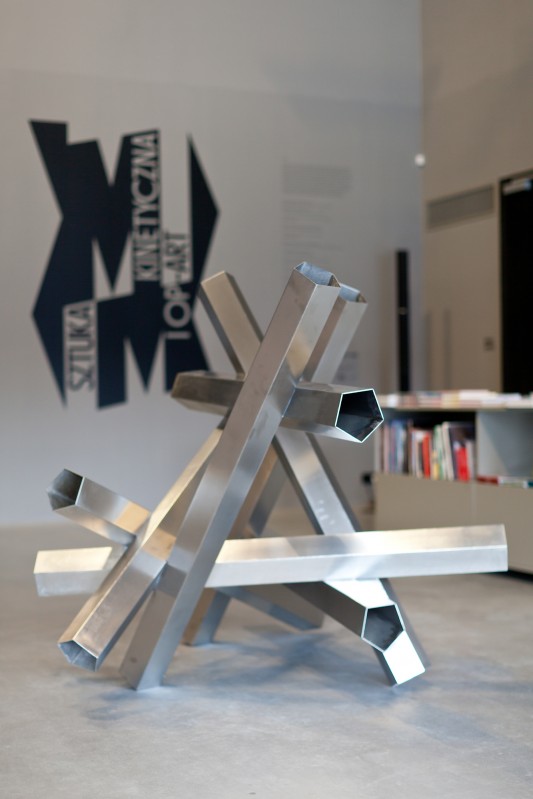SIGMA Group
On the 20th of July 1969, Romanians, like their fellow humans in other nations across the world, were intently following the broadcast of the moon landing. For this nation in particular, it was not only a symbol of the triumph of science and technology, but proof that a country that had been floundering under the rule of Nicolae Ceauşescu was finally opening itself up to the world. It was only a year before that its leader had refused to take part in the invasion of Czechoslovakia, in outright defiance of the instructions coming from Moscow. While a certain thaw with regard to political terror lasted only a few years, it opened up a space of freedom, in which brilliant new movements could be born, including SIGMA (1969 – 1981), one of the most interesting Romanian neo-avant-garde groups to mesh art with science and technology. Its founders Ștefan Bertalan and Constantin Flondor met towards the beginning of the 1960s as lecturers at the Art Lycée inTimișoara. They shared similar ideas regarding the role of art in modern socialist societies. The process of modernizing the country wasn’t only intended to improve the quality of life for individuals, but it also affected the way they interpreted reality. According to Bertalan and Flondor, artists who follow the modernist spirit should treat art not just as a medium for subjective expression, but also as a tool for the visual analysis of new forms of experiencing the world. They first set up the 1+1+1 Group with Roman Cotoşman. It was dedicated to the concept of Cybernetic Art and Op Art, inspired by theories of information, mathematics and bionics – an interdisciplinary study of creating machines that make use of the form and mechanics of living organisms. The group’s principles of honoring individuality shed light on the meaning behind the group’s name. This, however, changed as the group evolved into SIGMA, which functioned as a collective in the traditional sense. The group was established in 1969, following 1+1+1’s representing Romania duing the Constructivist Biennial in Nuremberg. There, Bertalan, Flondor and Cotoşman became acquainted with the International milieu of artists working at the intersection of art, science and technology, such as Nicolas Schöffer or Julio Le Parc. They returned to Romania without Cotoşman, who’d decided to escape to the West. They filled his spot with several artists, who also lectured at the school in Timișoara, including Ioan Gait, Elisei Rusu, Doru Tulcan, a także matematyk Luciana Codreanu.
The activities of SIGMA were based on two main pillars: creating a new art lexicon and developing a progressive form of pedagogy. For the group, geometry formed the foundation of reference, its rules re-evaluated in a shifting reality. Flondor, when asked about the inspiration he gleaned from abstract art, asserted that SIGMA’s practice had never been focused on abstraction, but on the concrete aspects of geometry, architecture and nature. This group of artists created several series of analytical drawings, architectural installations, which were subject to their environment, as well as sculptures that involved kinetic aspects, as well as experimental films dedicated to the analysis of such evanescent phenomena as the bursting of soap bubbles. One of SIGMA’s most intriguing works was the utopian project of an information tower constructed especially for the public space of Timișoara. The edifice was meant to react to changes in its immediate environment thanks to a simple computer system installed within it (similarly to the towers built by Nicolasa Schöffera), while offering a stock of basic, everyday information. In SIGMA’s actions, art, in making use of the achievements of technology, brings to life new ways of experiencing the world. In parallel to their collaborative work, its members dedicated themselves to cultivating a new formula for instruction, which they introduced in the school they taught—under the direction of Flondor since 1969. Rather than promote hierarchical relationships, the school developed partner relationships and a pedagogical approach rooted in a sense of universal equality. Interdisciplinarity and the integration of theory and practice were key, based on the ideas of Bauhaus. The preferred formula for carrying out lessons were workshops held in the open air, where artists and their students produced installations that were open to the effects of the environment. The pedagogical program made up an integral part of SIGMA’s creative activities, while art became a tool for researching shifts in the way reality is perceived as a result of scientific and technological development.
Constantin Flondor (born 1936) – A visual artist from Romania, affiliated with the 1+1+1, SIGMA and Prolog groups. Director and co-founder of a progressive educational program adopted within the Art Lycée inTimișoara between 1969-1975. Both his solo works and collaborative projects were markedly influenced by constructivism and rooted in algorithm, so that each element of a work was also a data bit. Flondor was also interested in how his para-architectural forms react in response to their surroundings.
